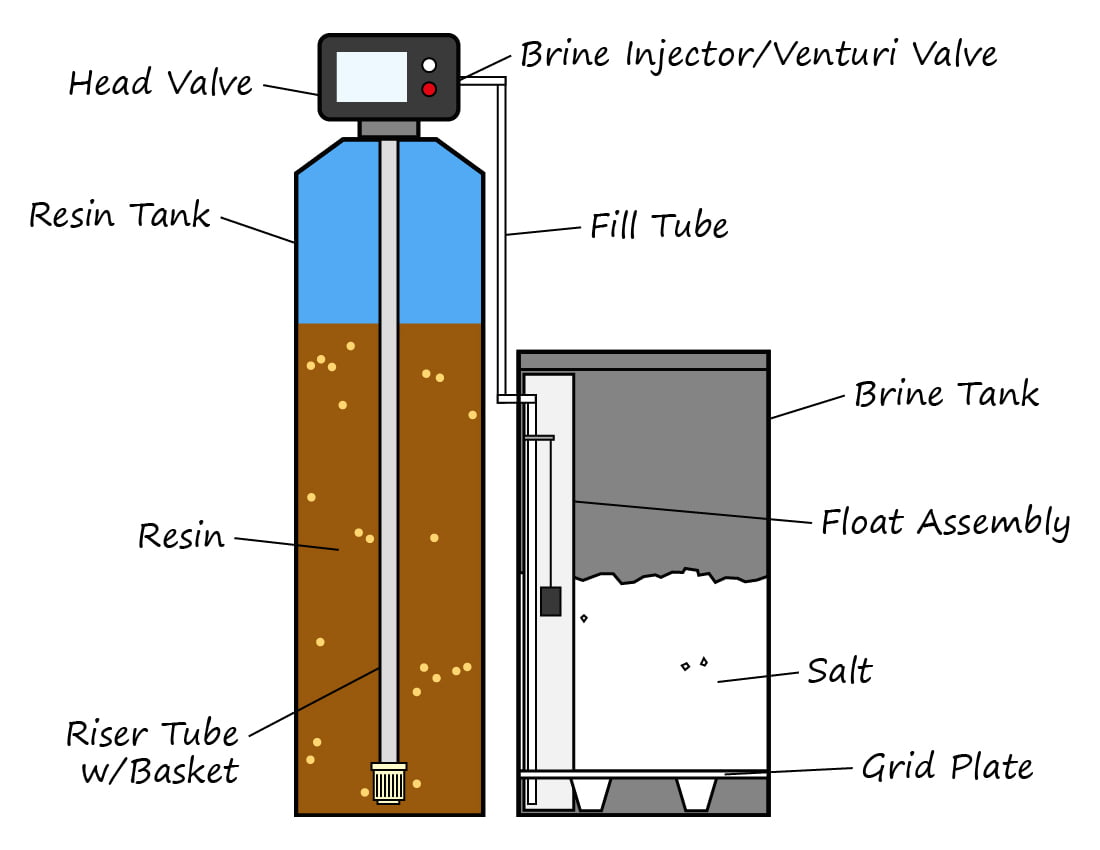Water Softeners for Dummies – Guide to a Beginner
Hard water can be a major problem in many households. You can not realize, but it can lead to more dry skin and frisophilic hair.
If you have hard water at home, there are ways to fight it and make life easier.
Find out what a water softener has to solve the problem!
How do you know if your home needs a water softener?
A water softener eliminates some hard minerals such as calcium and magnesium, including metal impurities of your well water. The difference between hard and soft water may be visible on the surfaces of the washed objects, including clothing, dishes and pipes.
You will need a water softener if one of the following is true:
Your laundry is steep and has wrinkles.
You have a high level of soap foam in your bathtub or shower doors.
Your bathroom tiles seem to shelter more dirt than they should.
Your skin looks dry even after swimming.
You use all kinds of chemicals to clean the dishes.
You realized how long you were wasted to clean these iced patchs from the driveway.
Allergies were worse and appear faster.
The pipes around the sinks, baths and toilets show signs of corrosion.
When the pH of the well water is less than 7, it has more acidic compounds. Acids dissolve most metals, making them more susceptible to corrosion over time.
This is why acids are corrosive agents – they literally eat the metal by producing hydrogen ions. These ions react with metals to form volatile salts that escape gases and create rust on metal surfaces such as pipes in your home.
Hard mineral deposits can accumulate pipes, luminaires and devices to cause corrosion, resulting in leaks or breaks.
That’s why we recommend investing in a high quality well softener!
How does a water softener work?
The water softeners combine a well-known process called ion exchange with sodium to replace calcium and magnesium ions in domestic water. A detailed description of the process can be found here.
The result is a much softer water that is safe for laundry, dishes and swimming.
Most water softening systems are like models at the entire wall or home for installation in your garage or basement.
Now, let’s look at the procedure!
Softening process of the sodium cycle
Each salt-based water softener consists of a spherical resin pearl bed with negatively loaded ions. As water enters into water, these pearls attract positively charged minerals such as calcium and magnesium to link them to their surface. Remember how anions and cations work – the same phenomenon arrives here!
As a result, the sodium ions that blocked the front softening pearls are released into the water to balance the electric charge on the resin.
So, the resin removes all the hard particles of the water before entering your home!
And after? What happens when the resin is saturated with hard minerals?
Water softener regeneration steps
Water softeners for well water Regenerate or recharge periodically to hold the resin bed for optimal functionality.
With modern systems, the moment when regeneration begins in depends on your individual water consumption.


